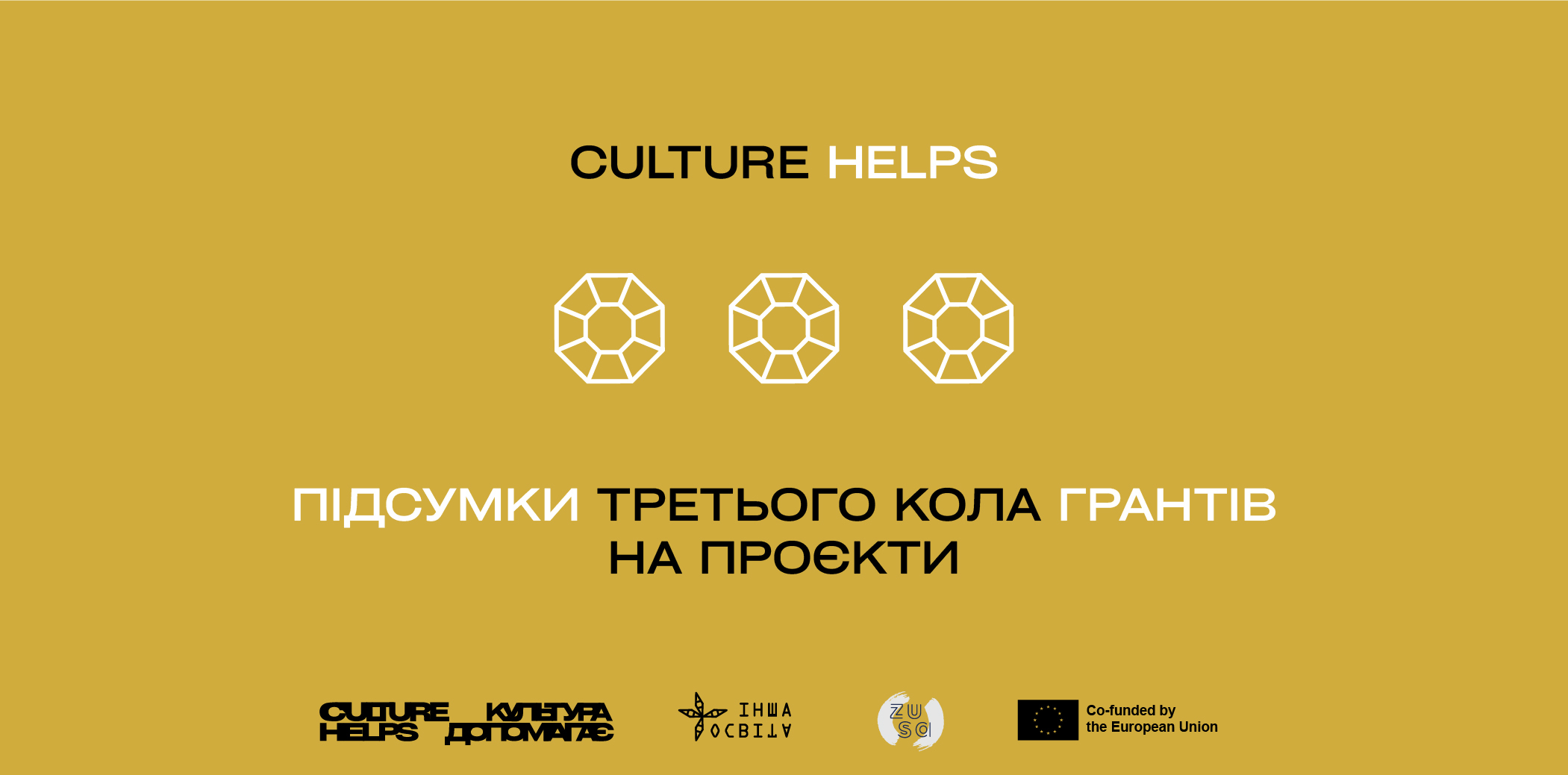
“Culture Helps / Культура допомагає”: news from grantees of the third call of project grants
For almost two years, Insha Osvita and zusa (Germany) have been working on the “Culture Helps / Культура допомагає” project. Its goal is to support organizations, initiatives, and cultural professionals focused on the integration of people who have fled their homes due to the full-scale invasion. “Culture Helps / Культура допомагає” is coming to an end, and we are slowly summarizing.
Among the opportunities implemented under “Culture Helps / Культура допомагає” are grants for the implementation of cultural projects. The focus remains the same: the adaptation of newcomers in local communities through artistic and cultural practices, often through mental health care.
We are now summarizing the results of the third round of project grants. We share an overview of the projects implemented by our grantees:
- The Lviv Cultural Center and the House of Sound have created an audio walk based on the experiences of people who have been displaced by the war. The central motif in these stories is interaction with the city through sound.
- In the project “Echoes of Memories: Living Stories of Hometowns,” the NGO ZNOvU also focused on processing and archiving the experiences of those who were forced to leave their homes after the full-scale invasion. As part of the project, people shared stories about places that were important to them, but to which they lost access or were destroyed. To facilitate the process, storytelling workshops were also organized in Odesa and Kharkiv.
- In Poltava, the NGO “Zmist” organized the festival “Artistic Seam” aimed at engaging people displaced by the war in cultural life. The project included workshops, lectures, and a meeting of the Vesnyanka with folk singing and dancing.
- Another festival, Dovzhenko Heals, was organized in Lviv by the Agency for European Innovation in cooperation with the Dovzhenko Center. The program, which consisted of lectures, training, and art therapy sessions, focused on mental health.
- The Mykola Babak Foundation’s Artification project held a series of art therapy sessions and workshops for families who relocated to Cherkasy due to the full-scale invasion. It also included an “Art Weekend” for children.
- The DOF Center organized a photography school for teenagers aged 12-15 who were forced to stay in Mykolaiv. “The Art of Seeing. Photo Expedition” is a 6-week course accompanied by a professional photographer.
- The ProEnglish Theater project is a 2-month acting course for people who have moved to Kyiv because of the full-scale invasion. The program, among other things, included a study of acting practices for dealing with stress. The participants also worked on a joint performance.
- The Women’s Association of Ukraine “Action” combined art therapy classes, pantomime classes, and visits to the theater with backstage tours of the theater building in the project “Cultural Kaleidoscope of Odesa. ”The NGO’s ‘Advocacy of Legal Initiatives” organized a film club in the village of Novyi Bykiv with film screenings and subsequent discussions.
- The Bereznovsk Children’s Library launched the BiblioArtik project, focused on psychoeducation and mental health support for families who moved to the community because of the war.
- Kvitka Polissia focused on gastronomic culture as a universal method of uniting people. Their project included culinary workshops, psychological training, and excursions.
- The Prosvita project in Dnipro organized an interactive theater studio where people displaced by the war could reflect on their experiences in a playback theater format.
- The NGO “People’s Aid of Ukraine”, together with the initiatives 20P_ and Femkuhnia, organized the DJ Teen Camp, a week-long intensive course in electronic music for teenagers who moved to Chernivtsi.
- The Humanitarian Pedagogical College in Bar, thanks to Culture Helps, launched the Ceramic Miracle art center with classes in ceramics and pottery.
- The Young Agents of Change launched the Sumy City Ambassadors project, which focuses on the study of urban culture and history.
15 initiatives for local communities and the integration of their new members in 10 cities across Ukraine were implemented within the third round of grant projects. Some projects were also implemented abroad: in Germany, the Czech Republic, Slovenia, and Poland.
____
“Culture Helps / Культура допомагає” is a project co-funded by the European Union under a dedicated call for proposals to support Ukrainian displaced people and the Ukrainian Cultural and Creative Sectors. The project is a cooperation between Insha Osvita (UA) and zusa (DE).




